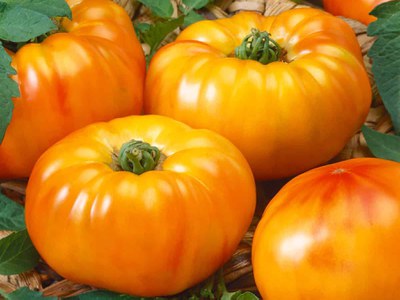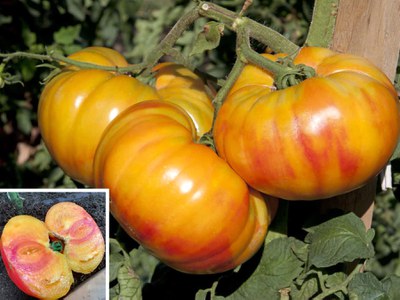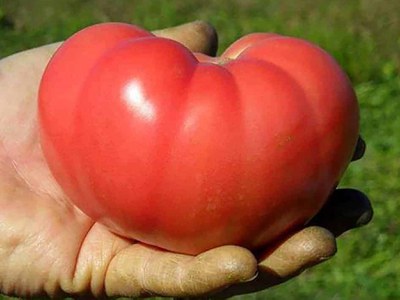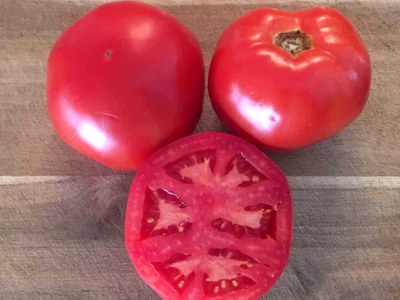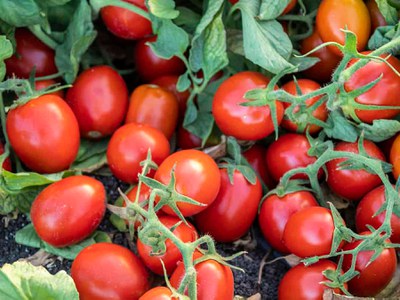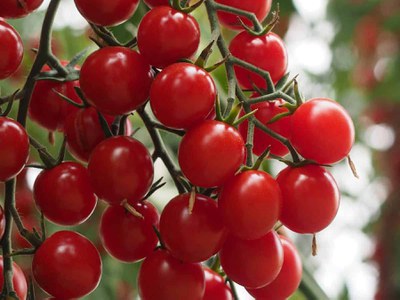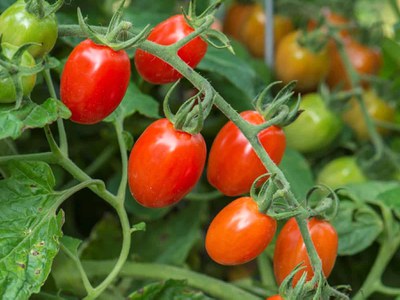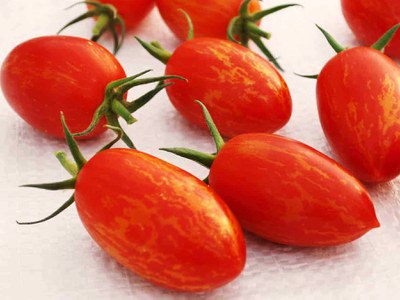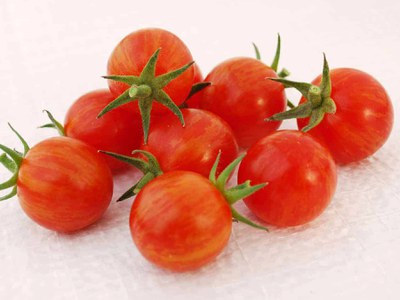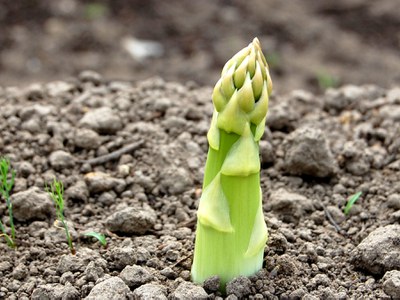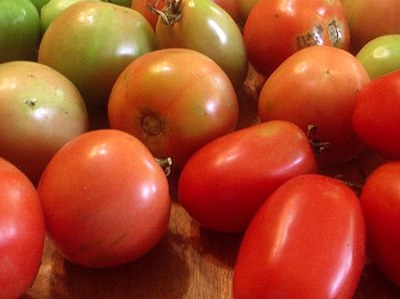Documents
Hungry Hares
The plants in our gardens are finally growing—and rabbits are hopping for joy.
Rabbit populations are soaring. They have multiple litters during the year, and it is common for a rabbit couple to have 20 or more offspring each year. When you realize each rabbit can eat one-half pound of vegetation a day, a family of rabbits can quickly destroy a garden.
The most effective strategy to stopping rabbits is to put a fence between them and the garden.
Chicken-wire fencing is recommended. The fence needs to be at least 24 inches tall for cottontails and 36 inches for jackrabbits. Bury the fence 6 inches deep. Bend the bottom edge of the fence at a 90-degree angle pointed outwards to discourage digging. The mesh must be 1.0 inch or less.
Repellents have been tried by gardeners for generations, but none are totally reliable. Marigolds, dried blood, moth balls, hot pepper, and ammonium or potassium salts of soaps may not stop a hungry rabbit. Many repellents cannot be applied directly onto the vegetables. Read and follow all instructions on the label carefully.
Scare devices including scarecrows, plastic owls, jars of water, and motion-activated sprinklers have limited use because the rabbits get used to them quickly. A guard dog near the garden can be an effective repellent.
Live trapping usually does not work as jackrabbits are reluctant to enter a cage. Cottontails are more easily trapped and can be coaxed into a cage with baits of apple, carrot, or cabbage. Trapping is best done in winter and early spring when natural food sources are scarce.
Shooting is another option, but there may be local restrictions.
Written by Tom Kalb, Extension Horticulturist, North Dakota State University. Photo courtesy of David O. Source: Vantassel, S.M., S.E. Hygnstrom, D.M. Ferraro and J.J. Lusk. 2010. Managing Rabbit Damage. University of Nebraska-Lincoln Extension.
New Tomato Varieties
Do you like tomatoes? Of course! Tomatoes are the most popular vegetable grown in gardens!
Do you want to try something new? I hope so because there are lots of new tomato varieties available.
Let’s focus on new varieties that have won the prestigious All-America Selections (AAS) Award. These varieties have performed well in tests conducted by professionals across the nation.
A strong trend in tomato breeding today is to develop varieties that combine the best qualities of modern varieties (high yields, reliability, and resistance to diseases) with the flavors of heirlooms.
This trend led to the development of the ‘Chef’s Choice’ tomatoes. ‘Chef’s Choice Orange’ was derived from the popular heirloom ‘Amana Orange’. It has the great flavor and bright color of the heirloom, but ripens earlier, resists cracking and resists diseases. It won the AAS Award in 2014. Since then, ‘Chef’s Choice’ has released purple, red, pink, yellow, green and black varieties, and many of those varieties have received AAS honors. This year’s release is ‘Chef’s Choice Bicolor’, an AAS-winner that has beautiful pink streaks inside its yellow flesh.
If you are looking for a huge, delicious beefsteak, consider ‘Buffalosun’. Its fruits weigh 18–24 ounces and have attractive ribbing. The fruits are orange with red streaks. The flesh is sweet and tender with pink marbling inside. The 5-foot, indeterminate vines resist late blight and several other diseases. Fruits ripen in only 70 days.
Another award-winning beefsteak variety is ‘Mountain Rouge’. The fruits are pink, weigh 12-14 ounces, and have a flavorful balance of acid and sugar. The tomatoes have minimal seeds and slice very well. From the Carolina mountains, the ‘Mountain’ series of tomatoes are famous for their resistance to diseases and grow especially well in cooler climates. The indeterminate vines produce heavy yields beginning in 73 days.
‘Galahad’ is a red beefsteak tomato with wonderful flavor and strong resistance to late blight. Its fruits are round and weigh 7–12 ounces. The determinate vines are vigorous and do not require pruning. ‘Galahad’ matures in 69 days.
I love the meaty taste of ‘Roma’ canning tomatoes but am frustrated with their susceptibility to blossom end rot. The first cluster of my ‘Roma’ tomatoes almost always have blossom end rot. ‘Early Resilience’ is a new ‘Roma’ type that resists blossom end rot. The vines resist many foliar diseases and are compact, growing only 24 inches tall. Harvests begin in 70 days.
Cherry tomatoes are fun to grow (and eat), but they crack easily. ‘Crokini’ is a new variety from France with crunchy fruits that resist cracking. The indeterminate vines produce fruits in only 63 days.
If you grow in containers, you may want to try ‘Celano’. This is a new grape tomato that won the AAS award for its delicious flavor and a bushy habit suitable for containers. The vines grow only 40 inches tall.
‘Red Torch’ and ‘Sparky’ are other recent AAS-award winners. These red tomatoes are striped with orange flames. Their indeterminate, 6-foot vines are productive and produce early (65 days). ‘Red Torch’ fruits are oblong and 1.5 inches long. ‘Sparky’ tomatoes are globular, 1-inch fruits with an extended shelf-life gene, allowing it to store well after harvest. Their resistances to diseases are not specified, but the vines have shown a good ability to produce high yields under extreme heat and other environmental stresses.
Look for these varieties when you visit your local garden center this spring. Better yet, grow your own transplants. Mid to late April is a good time to sow tomato seeds indoors. Do a Google search to find seed companies that sell these varieties. Pay special attention to any delays in shipping due to the COVID pandemic.
Written by Tom Kalb, Extension Horticulturist, North Dakota State University. Source: All-America Selections. Photos courtesy of All-America Selections.
How to Grow Giant Onions
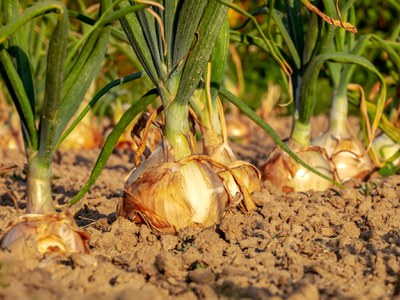 Do you want to grow giant onions?
Do you want to grow giant onions?
Here’s the secret: Giant plants make giant onion bulbs. Your onion plants need to be big when they begin to form their bulbs. Bulb formation begins in late April to early May in North Dakota.
We want our onion plants to have as many leaves as possible in the spring. That’s because every leaf creates a ring of onion. An onion plant with lots of leaves will have lots of rings -- and a bigger bulb.
Variety. We grow long-day onions in North Dakota. These onions form bulbs when days are 14 to 16 hours long.
'Ailsa Craig' is famous for growing the biggest bulbs. Many seed companies offer it. If you want to win the blue ribbon at the county fair, grow ‘Ailsa Craig.’
Due to COVID-19, ordering seeds early is a good idea. Garden seeds are in high demand and shipping delays are common.
Seeds, Transplants or Sets? Either option can grow big onions. Seeds should be sown in flats in mid-February. Sow seeds thickly and later thin to about 1/2 inch apart. Clip the tops once they grow 5 inches tall.
If buying transplants, look for those that have a diameter the size of a pencil.
Sets are generally used for growing green onions, not giant onions. If buying sets for growing bulbs, look for sets with diameters of 0.5 inch or less.
You may think a large set will lead to a large bulb. This is false. Compared with a small set, a large set is more likely to bloom, which leads to a small bulb.
Fertile soil. The soil should be well drained and loose. A sandy loam is ideal. Raised beds work well. Hard, compacted soil will restrict the growth of the bulb. Add an inch or two of peat moss, compost or other organic matter if needed.
A soil test will tell you the fertilizer you need. One general guide is to apply 1/2 cup of 10-20-10 per 10 feet of row before planting. One or two side dressings of urea (46–0–0) at a rate of 1/3 cup per 10 feet of row may be applied in early to midsummer. Fertilizations in late summer should be avoided because they lead to thick stalks and poor storage qualities.
Sunlight. Giant onions require full sun. Plants get their energy from the sun and we want our onions to get as much solar power as possible. Onions tolerate light frosts and typically are planted outdoors in late April.
Spacing. Giant bulbs need lots of space. Crowding the bulbs will limit their growth. Plants should be spaced 4 to 6 inches apart in rows spaced 12 to 18 inches apart. They may be planted in double rows or multiple rows per bed. If you plan to harvest some of the plants as green onions while young, space the plants 2 inches apart in the row and thin as needed.
Irrigation. Giant bulbs need irrigation. Onions have shallow roots and struggle in dry soil. The planting should receive 1 inch of water every week either from irrigation or rainfall. The availability of water is especially important while the plant is growing its bulb. Some gardeners increase watering to 1.5 inches every week during this stage.
Weed Control. Onion is one of the least competitive of all vegetable plants. You have to control weeds, which compete for water, nutrients and sunlight. Weeds also attract thrips and other pests that harm onions.
In the fall, you will harvest the biggest onions you have ever seen. Enjoy slicing them for sandwiches or making giant onion rings. I can’t wait for the gardening season to begin. Good luck!
Written by Tom Kalb, Extension Horticulturist. Photo courtesy of Couleur from Pixabay.
Youth Gardening Grants
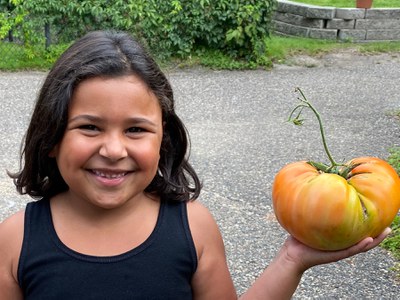
North Dakota State University Extension will make grants up to $750 available on a competitive basis to support youth gardening projects in North Dakota. Approximately $22,500 is available and efforts will be made to support youth gardening programs in as many counties as possible.
Schools, 4-H clubs, community organizations, church groups and other youth organizations are encouraged to apply. The deadline for applications is March 12, 2021.
Funds may be used to purchase gardening supplies (hand tools, soil, seeds, plants, containers, etc.), Junior Master Gardener and/or other gardening books, and other teaching supplies. Funds cannot be used for snacks or other food, transportation, labor or major equipment.
Any project related to youth and gardening is eligible. Examples of possible projects include:
- The establishment of school gardens to promote the consumption of healthy foods.
- Food security gardens that grow vegetables to be donated to local food pantries.
- Construction projects such as building raised garden beds for the elderly.
- Beautification projects at schools, day care centers, parks, museums or along streets.
- Planting trees to establish small arboreta at schools or parks.
Selection criteria include (but are not limited to) the number of children involved, number of days of activity involved, location of project, and the value of the project to the overall community.
Funds awarded in 2021 need to be used by June 5, 2021. Project coordinators must pay for project supplies and submit all receipts for reimbursements when their allocated funds are spent.
More information and application forms are available at the North Dakota Junior Master Gardener website. Reports from projects supported in the past are available at the site.
Inquiries can be made to Dean Aakre at dean.aakre@ndsu.edu, Tom Kalb at tom.kalb@ndsu.edu or Carrie Knutson at carrie.knutson@ndsu.edu.
Written by Tom Kalb, Extension Horticulturist, North Dakota State University.
The New Leader in Asparagus
‘Millennium’ has emerged as the top choice of asparagus varieties in the Midwest.
For several years, University researchers have recommended the “all-male” hybrids from Rutgers, including ‘Jersey Giant’, ‘Jersey Knight’ and ‘Jersey Supreme’. Walker Brothers, the producer of ‘Jersey’ asparagus crowns, has stopped propagating them. Retailers may have a limited supply of ‘Jersey’ varieties in stock, but we need to find an alternative in the long run.
‘Millennium’ looks outstanding. It’s high yielding, long lived, cold hardy, and adaptable to a wide range of soils.
Bred in Ontario, ‘Millennium’ has been grown successfully in Minnesota for several years. Trials conducted in 2013 in northern Minnesota showed it produced 2,094 pounds per acre compared to 1,287 pounds for ‘Jersey Giant’ and 1,233 for ‘Jersey Knight’.
Research in Michigan found plantings of ‘Millennium’ were slower to attain high yields compared to ‘Jersey’ varieties, but they later showed superior and heavy yields over a 15-year lifespan. Plantings show greater vigor and survival.
The yield advantage of ‘Millennium’ may be in part because it has a higher proportion of male plants compared to the ‘Jersey’ varieties. Male plants are desired because their energies are more focused on producing spears. Female plants spend part of their energy forming seeds. These seeds later drop, causing the bed of asparagus to get overcrowded and the spears to get smaller.
Large scale plantings in Michigan indicates ‘Millennium’ is better adapted to cold climates compared to ‘Jersey Giant’ or ‘Jersey Supreme’. It goes dormant earlier in the fall and emerges later in spring, reducing the risk of frost damage. ‘Millennium’ is hardy throughout our state.
‘Millennium’ may be managed to reduce populations of asparagus beetles. Ferns that go dormant earlier in fall can be cut earlier, reducing the likelihood of asparagus beetles from overwintering in the debris.
‘Millennium’ has shown the ability to grow well in a wide range of soil types, including heavy soils.
‘Millennium’ shows intermediate resistance to rust, the most damaging disease in asparagus plantings.
Traditional open-pollinated lines such as ‘Mary Washington’, ‘Martha Washington’ and ‘Purple Passion’ are still available. These varieties have a much higher percentage of female plants. They are less productive, and their spears are less uniform in size compared to those of hybrids.
Hybrids developed in California do not have the hardiness and vigor we need in North Dakota.
Gardeners typically start asparagus plantings using 1-year-old roots. A light harvest is available in the second year, a larger harvest the third year, and a full harvest thereafter. Due to the COVID-19 pandemic, gardeners are encouraged to order early to ensure the availability of roots.
Written by Tom Kalb, NDSU Extension. Photo courtesy of Nelly.
Sources:
Fritz, V.A., C.J. Rosen, W.D. Hutchinson, R.L. Becker, J. Beckerman, J.A. Wright, C.B.S. Tong and T. Nennich. 2013. Asparagus production guide. University of Minnesota.
University of Minnesota. 2021. Jersey asparagus varieties being discontinued – next steps.
Storing Your Harvest
Frosty weather has arrived and many of us are busy harvesting our vegetables. You can extend the enjoyment of your harvest by storing your vegetables properly.
Most vegetables will store best at around 32°F, but you can store most vegetables for 2–3 months at temps around 50°F and in high humidity. Most of us do not have a root cellar, but we likely have some space where we can keep our produce cool: an unheated garage, mud room or a cool area in the basement.
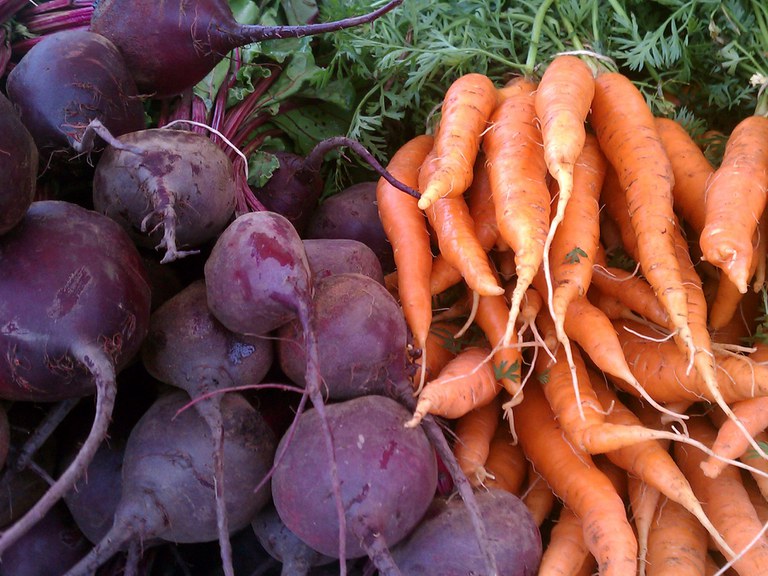 |
Beets and CarrotsCold and Moist Harvest before a killing frost (28°F) and when the soil is dry. Gently remove the soil. Do not scrape roots. Slice off the tap roots from beets. Do not wash roots before storing. This promotes rotting and removes beneficial bacteria in the soil near the skin that fight decay. Wash roots only before you eat them. Trim each top to ¼ inch. Longer tops will lead to more decay. Shorter tops will cause roots to dry. Store in perforated plastic bags or in sealed containers filled with damp sand. Perforated bags will increase humidity and allow for air circulation. Store at 32–40°F and 90–100% RH. |
|
|
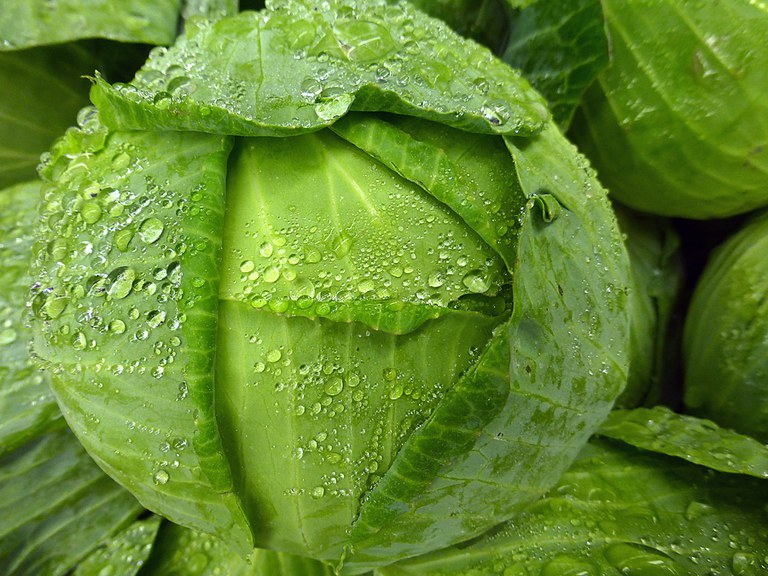 |
CabbageCold and Moist Keep a few of the outer wrapper leaves attached. Store at 32°F and 90–100% RH. |
|
|
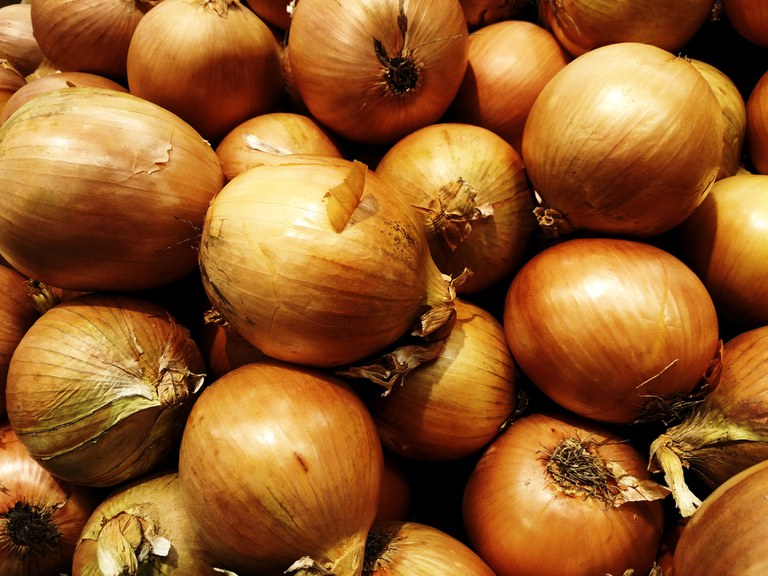 |
OnionsCold and Dry Harvest when tops have fallen over. Keep in the garden for a couple days to dry. Shake off loose dirt. Lay out the bulbs in a single layer in a warm, airy place like a shed or garage. Cure until the necks wither (2–4 weeks). Trim tops to 1 inch; trim roots. Store in mesh bags in a dark, airy place, 32–40°F with 65% RH. Store away from potatoes, which give off moisture. Sweet Spanish types will store for a few weeks; specialty storage varieties may store up to 6 months. |
|
|
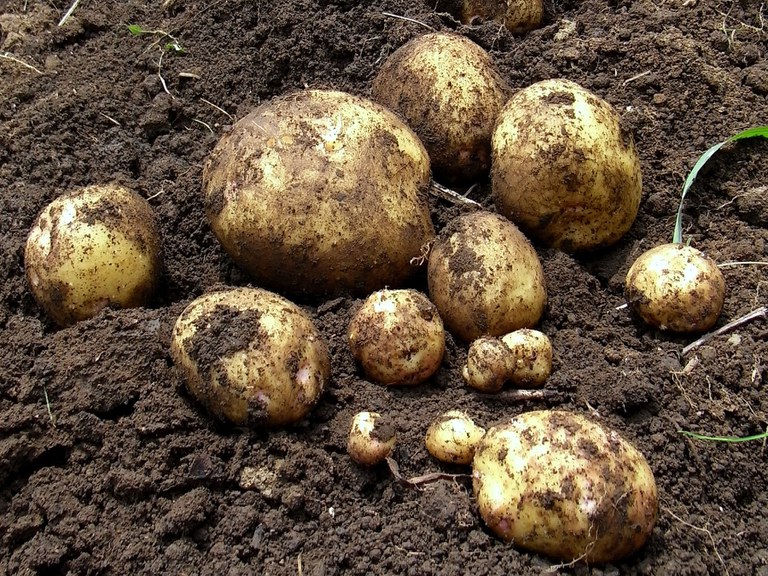 |
PotatoesVery Cool and Moist Harvest after the foliage dies back. This allows the skin to set on the tubers. Do not let tubers freeze in the ground. Use a spading fork to dig tubers. Remove loose dirt and avoid bruising. Do not wash. Cure for 2 weeks in a dark, well-ventilated area with moderate temperatures (50s) and high humidity (80–90% RH). Store in mesh or perforated bags, crates or vented boxes. A very dark, cool (42–55°F), humid (90% RH) site is best. Colder temperatures will increase sweetness and darken fry color. Warmer temperatures may encourage sprouting. |
|
|
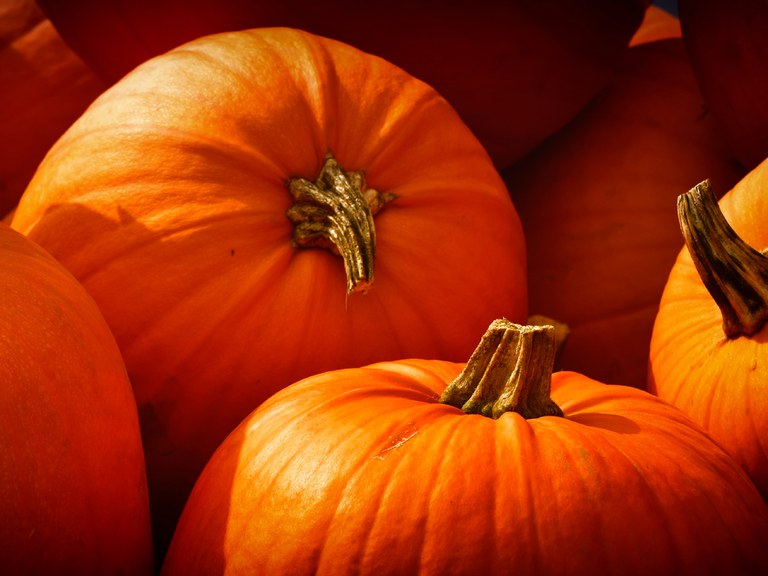 |
PumpkinsCool and Dry Harvest before a killing frost (28°F). Leave a few inches of stem attached. Avoid picking up pumpkins by their handles and do not bruise. Fruits with an orange blush will turn more orange if exposed to sunlight and warmth. Place on a deck or indoors near a sunny window; green side toward the sun. Keep indoors during hard frosts. Cure pumpkins in a warm (80°F) spot for 10 days for long-term storage. Wipe but don’t wash fruits. Store on pallets at 50–60°F, 50–70% RH and good ventilation. |
|
|
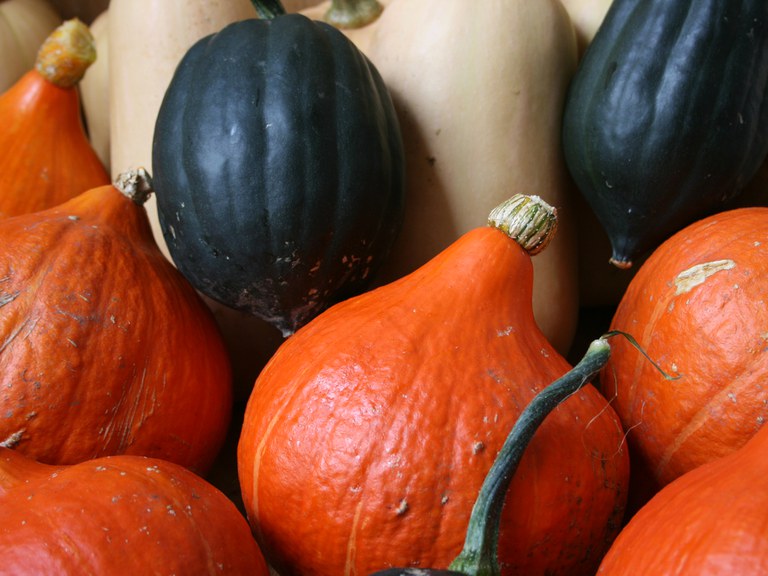 |
Winter SquashCool and Dry Signs of ripeness include dry stems, a dark-orange spot on fruit bottoms, and hard, glossy rinds. Harvest before a killing frost (28°F). Leave at least one inch of stem. Wipe but don’t wash fruit. Cure buttercup, butternut and hubbard squash in a warm (80°F) spot for 10 days to toughen skin for storage. Acorn squash will not store long and do not need to be cured. Store squash on pallets at 50–60°F, 50–70% RH and good ventilation. |
Written by Tom Kalb, Extension Horticulturist, North Dakota State University.
Sources:
Jauron, R. and G. Wallace. 2014. Yard and Garden: Harvest, dry and store onions, garlic and shallots. Iowa State University: Ames.
Johnny’s Selected Seeds. Storage crops: Post-Harvest handling & storage guidelines. Accessed October 2020. Albion, Maine.
Woodell, L., N. Olsen and J. Wilson. 2009. Options for storing potatoes at home. University of Idaho: Moscow.
Photos were made available under Creative Commons licenses specified by the photographers: bluekdesign; arbyreed; Thad Zajdowicz; Ishikawa Ken; Alexas Fotos; and Nick Warner.
Ripening Tomatoes Indoors
Tomatoes are very sensitive to cold temperatures. Blankets or tarps can protect the vines from a light frost and perhaps give you another week or two of gardening.
When a hard frost (28°F or colder) is expected, you need to run out to the garden and rescue whatever tomato fruits you can. Here is how to ripen the tomatoes indoors:
Any tomato showing a blush may ripen off the vine. Start by cleaning the fruits. Discard fruits with spots or cracks -- they will likely rot before they ripen.
Set tomatoes on a sheet of newspaper, and then place another newspaper sheet over the fruits. This traps ethylene, a natural gas that fruits emit when ripening. Some gardeners wrap each tomato to trap the ethylene. Other gardeners place apples nearby the tomatoes since apples emit lots of ethylene.
Keep tomatoes out of direct sunlight. Do not set them on a windowsill. If placed in a sunny area, the outer skin will redden before the inner flesh develops flavor.
Room temperatures are best. Cooler temperatures prevent the tomatoes from developing their full flavors. Warmer temperatures create the same problem, plus increase the chances of rotting.
Check your tomatoes every day or so. Remove any that are rotting.
If all goes right, you can enjoy the goodness of homegrown tomatoes later this fall.
Written by Tom Kalb, Extension Horticulturist, North Dakota State University. Photo courtesy of Andrea R.
Growing Garlic in North Dakota
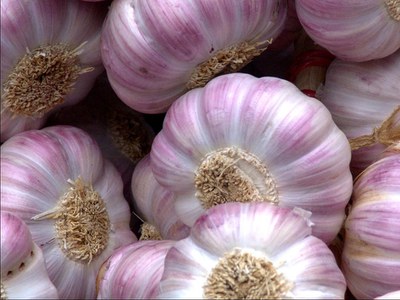 |
| Plant garlic this fall and enjoy delicious meals next summer. |
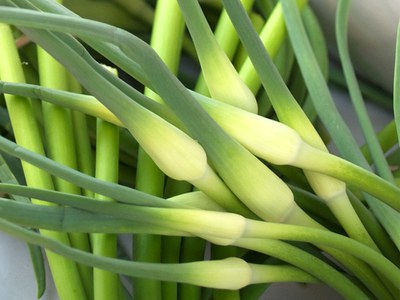 |
| Garlic scapes are mild in flavor and taste great in stir fries. |
This is a great time of year. It’s harvest season, and it’s a joy to be eating fresh vegetables from the garden.
Most of us don’t think about planting now, but if you want to take your garden to the next level, think about growing garlic. It will add amazing flavors to your meals next summer.
Fall is the time to plant garlic, and now is the time to purchase your bulbs.
Garlic types include hardneck, softneck and elephant. Hardneck types are hardiest and most suitable for us in North Dakota.
Numerous seed companies offer garlic cloves. It’s important to purchase your cloves as soon as possible. Supplies of the finest varieties are limited and in high demand. Your local garden center is another good place to buy hardy garlic bulbs.
Popular hardneck varieties in North Dakota include ‘Music’ and ‘German Extra Hardy’. These German varieties produce large cloves and are very reliable.
It’s fun to try other varieties from around the world. Varieties are available from Spain, Romania, the Middle East, Siberia and the Orient. Some of these varieties taste mild while others have bold and pungent flavors. Some varieties are prized for baking, while others are selected for roasting or frying. The cloves come in shades of white and purple, many in bright stripes.
Garlic is planted soon after the first hard frost, which is usually in late September or early October.
The cloves grow best in a rich, well-drained soil. Add an inch of compost to the site and 2 to 3 pounds of 10–10–10 per 100 square feet. Work this into the soil.
Separate cloves from the bulbs a day before planting. Set cloves upright in the furrow, pointed end up, 4–6 inches apart and 2 inches deep. Space rows 18–30 inches apart.
Water deeply to activate the cloves. The cloves will push out roots and underground shoots this fall. Mulch with 4 inches of straw in November. This straw will insulate the soil and protect the sprouted bulbs.
Next year the sprouts will shoot out of the ground. Harvest the flower buds (scapes) when they curl in June. They are mild in flavor and great in stir fries.
Harvest the bulbs in July when the lower leaves turn brown. Then get ready for some of the most delicious meals you have ever eaten!
Written by Tom Kalb, Extension Horticulturist, North Dakota State University. Photos were made available under Creative Commons licenses specified by the photographers: Felix; danbruell.
Super Sweet Squash
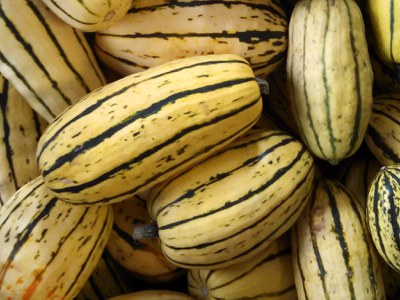 |
| Delicata squash. |
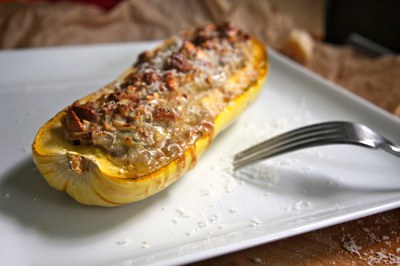 |
| Delicata squash stuffed with nuts and cheese. |
Would you like to grow a squash that tastes as sweet as honey?
You may want to grow Delicata squash in your garden this year. It is an heirloom squash from the 1800s that scientists have rediscovered. Sometimes called sweet potato squash, it is famous for its orange, dry, "sweet as honey" taste.
Delicata squash ripens early. The cylindrical shape of the 8-inch-long fruits makes them easy to stuff with ground meat, grains, nuts, cheese or other vegetables.
Delicata squash gets its name from its thin, delicate skin. The skin is easy to cut, tender and edible―this is rare among winter squashes. The skin has a nutty flavor.
Gardeners in the past cherished the flavor of Delicata squash but were frustrated by its susceptibility to diseases. Plant breeders have since developed modern varieties that show greater tolerance to disease as well as enhanced sweetness. ‘Bush Delicata’ from Cornell University tolerates mildew and is a leading variety grown by commercial farmers.
Written by Tom Kalb, NDSU Extension Horticulturist. Photos courtesy of Green Mountain Girls Farm and tracy benjamin.
How to Thin Seedlings
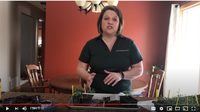 Overcrowded seedlings grow into poor plants that likely will not succeed in the garden. Start thinning seedlings as soon as they have a set of true leaves. Seedling thinning can be done in two ways. Watch Video (3:15)
Overcrowded seedlings grow into poor plants that likely will not succeed in the garden. Start thinning seedlings as soon as they have a set of true leaves. Seedling thinning can be done in two ways. Watch Video (3:15)






